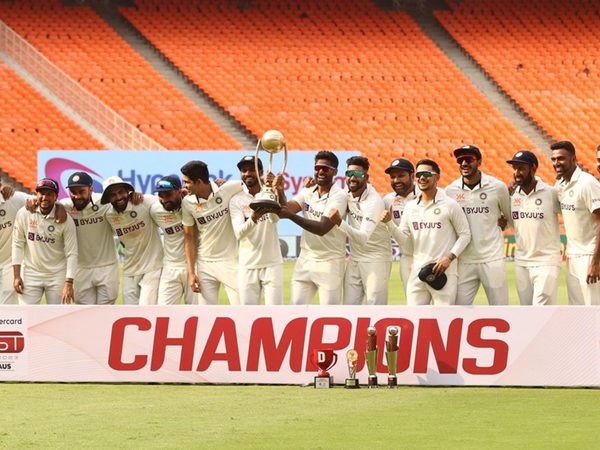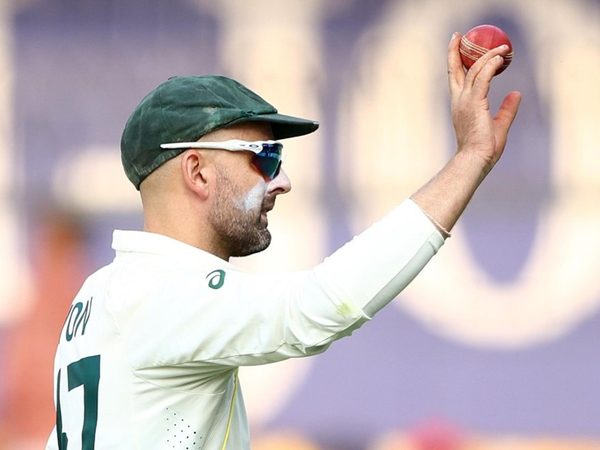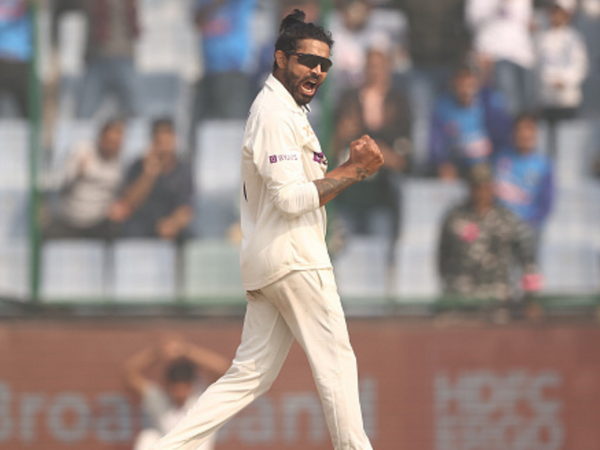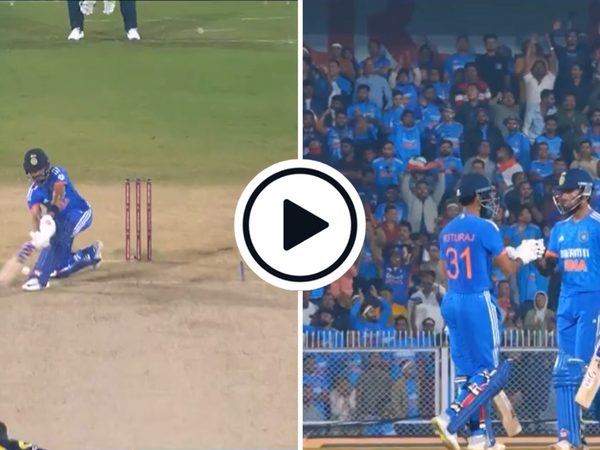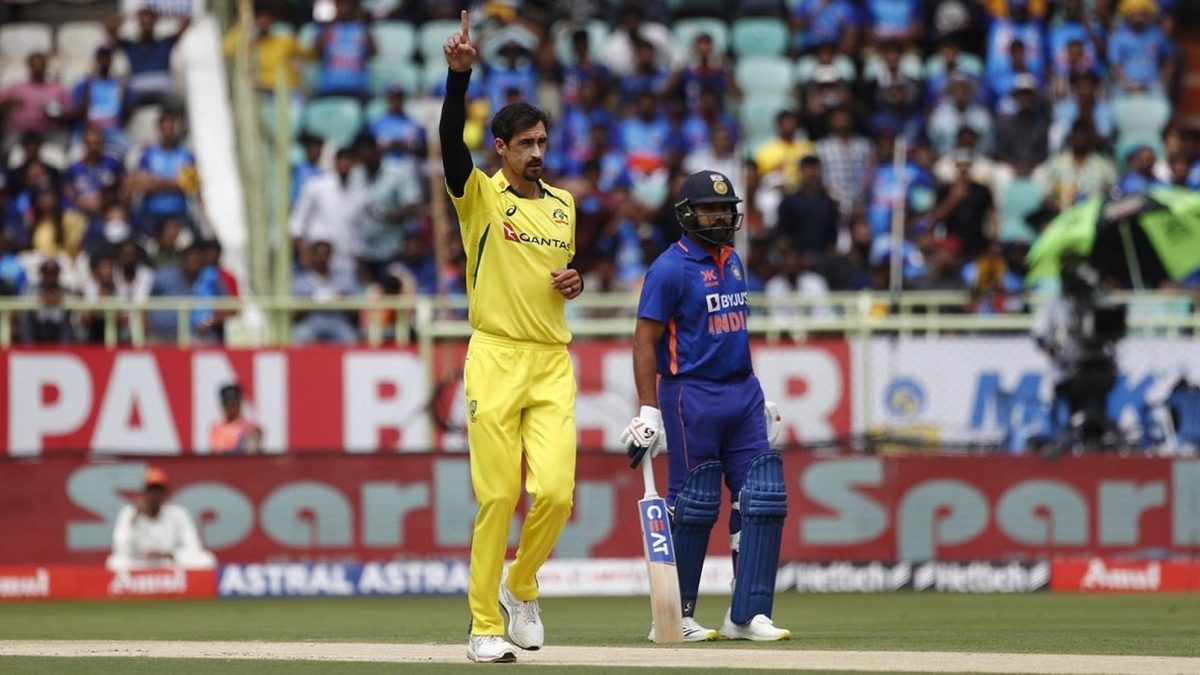
No bowler in the history of men’s ODIs has taken wickets with such startling frequency as Mitchell Starc, writes Abhishek Mukherjee.
Mitchell Starc claimed five wickets in the second ODI against India, and on another day it could have been more – he took the first four wickets with his trademark new-ball swing, before a more conventional top-of-off cracker did for No.11 Mohammed Siraj to confirm the milestone.
It was an important one too, from a statistical perspective. Now, only two men – Waqar Younis (13) and Muttiah Muralidaran (10) – have more five-wicket hauls than Starc’s nine, though Brett Lee and Shahid Afridi also have nine apiece.
Why five-fors, you may ask. To take a five-wicket haul in a 50-over match is an incredible feat. Unlike in Test cricket, you run out of overs here. To take five wickets, you have to strike once every two overs, no more, to get there.
It is the nature of the format that has prevented some of the greatest in the format from getting five-wicket hauls as often as they have in Test cricket. Only five others – Lasith Malinga (8), Glenn McGrath (7), Wasim Akram (6), Saqlain Mushtaq (6), and Lance Klusener (6) – have gone past five.
Had there been nothing else, this one statistic would have been enough to establish Starc in the pantheon of ODI giants. Yet, this is only where it begins for him.
Starc’s nine five-wicket hauls have come in 109 matches – in other words, once every 12.1 ODIs. Of bowlers with four five-fors, the next best is Hasan Ali’s 15 (four times in 60). Of bowlers with seven five-wicket hauls, everyone else has played at least twice as many ODIs.
Of course, there is merit in the argument of five wickets in an innings not being the ultimate criterion to determine the quality of a strike bowler.
Starc’s 21 four-wicket hauls (these include the five-fors) are the fifth best in history, after Waqar (27), Muralidaran (25), Lee (23), and Wasim (23). As with the names on the list of five-fors, all of them have played more than twice as many matches as Starc, as have Malinga (19), Shaun Pollock (17), and McGrath (16), while Saqlain (17) played 169.
Starc has also taken three wickets 35 times – in other words, in nearly a third of his ODI appearances. There is little point in delving into Starc’s two-wicket hauls, because that is a below-average performance by his standards.
Indeed, of all bowlers with 100 ODI wickets, Starc (2.01) is the only one to average more than two wickets a match. Rashid Khan (1.90), Trent Boult (1.89), Mohammed Shami (1.82), and Shane Bond (1.79) look close, until you realise that the Starc is roughly as far ahead of Rashid as Rashid is of Bond.
There is the conventional parameter of strike rate as well, where Starc (25.6) is clear of Rashid (26.6) at the top among bowlers with 100 wickets. To find a bowler from a Full Member nation who has struck more often than Starc, one has to reach Corey Anderson, whose strike rate is 24.7 but across only 60 wickets.
The numbers mentioned above merely demonstrate how often Starc has struck (if you mind the tongue-twister). But there is more to Starc’s greatness than even these figures.
A bit of history
For years, the best fast bowlers of a side often bowled at the start and at the death in ODIs. In the 1990s, as teams began to take advantage of the powerplay, the quickest bowlers often got hit for runs and sometimes were not used in the first ten overs.
It did not matter. They could not use the new ball anymore, but they could use the old ball, because by the 1990s, most international pace bowlers could reverse swing the old ball. They could be devastating at the death.
By the turn of the century, ODIs became entirely white-ball dependent, and the white ball seldom lasted beyond the 35th over. Despite persistent efforts, Kookaburra – whose monopoly in the white-ball industry strengthened over the first decade of the new century – failed to manufacture a ball that would last longer.
Balls had to be changed at least every innings, taking up unnecessary time. In 2007, the ICC introduced a mandatory change of ball after the 34th over. And in 2011, they replaced that with one new ball from each end. While this solved the problem, it took reverse swing out of the equation. They also introduced a stricter fielding restriction, which they retracted in 2015.
Starc debuted in December 2011, two months after the ICC had implemented the two-new-ball rule. He never had the advantage of his predecessors. As Twenty20 grew in popularity, the number of power-hitters increased, making bowling at the death even more difficult in ODIs.
That perhaps puts Starc’s already astonishing numbers into proper perspective.

